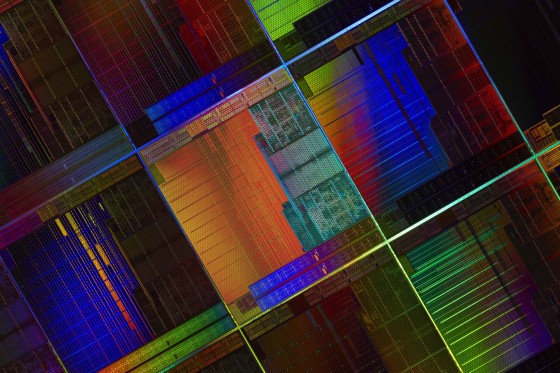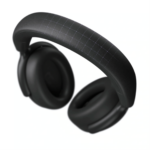Commercial PC sales are staging a comeback in 2014; AMD wants to make sure they get in on the action.
By Randall S. Newton
Until the rise of smartphones and tablets, the commercial PC business drove the computer industry. Innovations such as solid-state storage and CPUs that are more powerful were introduced into PCs for enterprise customers first, then small businesses, and then finally the consumer market.
But the iPad and its rivals changed all that. Executives and call center reps all wanted the additional utility of the second screen they were enjoying outside of work. Desktop PC sales plummeted as more tablets and smartphones infiltrated the IT hegemony.

Handheld computing devices did more than threaten IT control of the computing environment; they helped mainstream a new generation of more graphical business applications. HTML5 only became important for its improved graphical abilities when mobile clients embraced it. Now even the most basic commercial software products are graphical, running HTML5 from a cloud or taking advantage of OpenCL for general-purpose GPU computing. Excel uses fade in/fade out to provide visual feedback; PowerPoint presentations include video, animations, and graphic transitions. The billions of photographs and videos taken on those mobile devices needed to be edited and annotated in Photoshop and Premiere.
Mining the graphics niche
Dwelling in the shadow of Intel, #2 CPU maker AMD has for years mined the graphics niche. The GPU division has been locked in an arms race with Nvidia, with end users reaping the benefits of ever more powerful graphics hardware. Then GPU power started bleeding over into general-purpose computing as programmers found new ways to harness the parallel processing power of graphics cards. AMD was nimble enough to bring their graphics expertise to the CPU market, a difference that kept AMD relevant in the PC market even as PC sales were falling off a cliff.
Commercial PC sales are staging a comeback in 2014. But this is not your big brother’s desktop marketplace. Graphics drives productivity and collaboration today, no matter the application. Monitors with 4K resolution are not just for video: as mobile has packed more pixels on the small screens, the appetite for clarity has moved to the desktop screen. Streaming video is for work as well as play, if for no other reason than the social media agenda demands a presence on YouTube. Consumer class graphics experiences are now the norm for the commercial PC market.
AMD sees gold in the new commercial PC market. As a result, it has retooled internally to get a bigger piece of the pie. Newish senior director of AMD’s commercial client business, Aditya Kapoor, has the green light (and the budget) from top management to promote the new generation of AMD CPUs to OEM computer makers. More specifically, promote the latest generation of Accelerated Processing Units (APUs), which go by the name AMD PRO A-Series, and combine multicore CPU power with its Radeon graphics prowess.
AMD’s marketplace research shows acceleration opportunities of around 50% (16 of 30) for common business computer tasks on AMD APUs. A survey of IT decision makers shows “hardware limitations” when working with video and photos as the top two pain points in a matrix of 50 variables.
To reach a larger portion of the commercial market, the AMD APU formerly known as Kaveri is now the AMD Pro A-Series APU. All the recent innovations are crammed in, goodies like up to 12 compute cores (4 CPUs and 8 GPUs), Graphics Core Next architecture, and two new heterogeneous processing capabilities that give both the CPUs and the GPUs equal and flexible access to memory (HUMA, heterogeneous uniform memory access) and to each other (HQ, heterogeneous queuing). These new chips understand OpenCL, so, for instance, the Adobe Mercury Playback Engine runs smoother with less computational overhead.
AMD says the Pro A-Series processors test well in common business applications. Running Adobe Photoshop CC, AMD claims the A8 model is 59% faster than its previous generation, and up to 384% faster than an equivalent Intel Core i5. A new partnership with the people behind LibreOffice, a leading open source alternative to Microsoft Office, is paying dividends: LibreOffice Calc runs 50% faster when OpenCL optimization is on. The business-class optimizations in the Pro A-Series also take in support for Dragon voice processing, gesture control, and face login; implementation depends on the OEM and software in use.
Video acceleration The Pro A-Series applies GPU acceleration to web and cloud-based video conferencing supports the H.323 codec, offers acoustic echo cancellation, and even knows how to manage bandwidth during Skype and iChat sessions to reduce signal latency issues. (If you’ve ever wanted to throw your coffee mug against the wall when every third syllable drops out during a video conference, you know AMD is on to something.)
HP and several of their peers are building new desktop and notebook PCs using the Pro A-Series-A chips. For AMD, the challenge now is to build mindshare among enterprise and small business users around the bang-for-the buck benefit of specifying AMD-based computers. A forthcoming “AMD Pro” campaign will emphasize the business benefits of AMD processors, with a budget that Kapoor says is “significantly” higher than in years past.
What do we think?
In trying to appeal to the commercial market as a best-in-class solution, AMD is a victim of its own past success as a bargain brand and a niche competitor in areas like gaming and video editing. OEMs like to have a portfolio featuring an entry-level choice, and options into the higher margin features as an upsell. But the features that will further enhance the AMD-based computing experience (like solid-state drives and better monitors) are reserved for the upsell systems, all running Intel CPUs. The AMD Pro campaign will succeed if it can get enough of those beloved IT decision makers to think beyond the safe choice and consider the benefits. OEMs will build upscale computers with AMD inside if the demand rises in the commercial PC market, the biggest niche of all.





